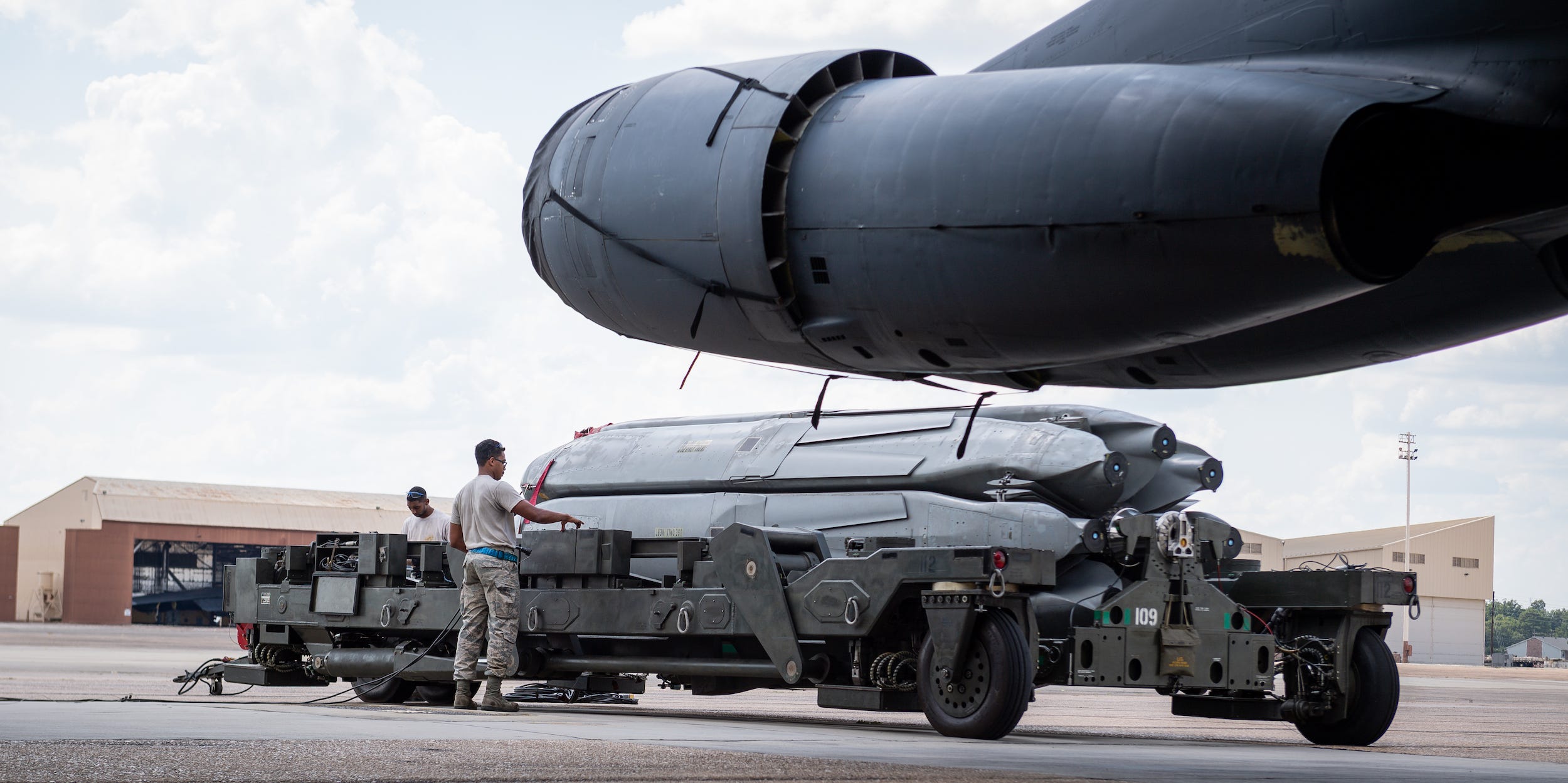
US Air Force/Senior Airman Lillian Miller
- The 2nd Bomb Wing at Barksdale Air Force Base hosted an Aircraft Monitor and Control test for the B-52H Stratofortress between August 24 and 26.
- The test is done every five to 10 years to demonstrate the B-52’s ability to provide the required voltage levels to use the AGM-86 air-launched cruise missile.
- Visit Business Insider’s homepage for more stories.
The 2nd Bomb Wing hosted an Aircraft Monitor and Control test for the B-52H Stratofortress August 24-26, 2020.
The test is performed every five to 10 years to demonstrate the capability of the B-52 to provide the required voltage levels for the mission configuration in the AGM-86 air-launched cruise missile interface (ALCM).
Barksdale’s preparation started a month prior to the test date with the selection of the aircraft and a complete missile operational check.

US Air Force/Senior Airman Lillian Miller
“Nuclear compatibility certification is based upon compliance with the design criteria defined by Air Force Nuclear Weapons Center (AFNWC) Surety and Certification Division (NTS), which measures key parameters of the B-52H’s ability to communicate with the AGM-86B missile,” said Mahmoud Rasouliyan, 2nd Maintenance Group director of operations. “Successful certification of the platform will allow the B-52 to continue to support the nuclear triad.”
The equipment for testing is attached to the warhead and is able to record timing and voltages across the warhead, missile and aircraft. The required sample size for this test will meet a historical Sandia National Laboratories (SNL) requirement of two B-52 aircraft.

US Air Force/Senior Airman Lillian Miller
"After a successful loading of 20 missiles, our 2nd Operations Group aircrew members were able to flex their schedules and perform the engine run portion of the test ahead of schedule to meet the SNL test points," said Rasouliyan. "The next day, the aircraft was towed into the Weapons Load Training facility for the AFNWC/NTS power requirements. Upon completion of the NTS' test, the SNL team continued with their final testing requirements."
Due to Hurricane Laura, all AMAC test requirements were accomplished one day earlier than planned and all of the main test points were successfully captured by the SNL and AFNWC/NTS teams.
The test data will be analyzed to compare against previous data in order to monitor changes in the baseline, thus indicating a design issue created by aging, aircraft modification or a combination thereof.

US Air Force/Senior Airman Lillian Miller
"We test on aircraft to ensure that the data we are collecting is from a weapon system that is representative of the fleet," said Ben Post, Sandia National Labs aircraft compatibility department B-52 electrical lead.
"Prior to these testing activities, we have not captured waveforms during an AMAC test of a max loaded B-52's ALCM configuration. We want to prove that it works functionally and then check the signals that we're capturing here to make sure the values match what the specification allows."
Sandia, the engineering arm of the nation's nuclear weapons enterprise, is responsible for the non-nuclear components of US nuclear weapons.
